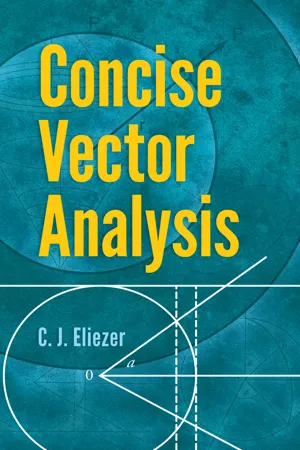
Concise Vector Analysis
C. J. Eliezer
- 160 pages
- English
- ePUB (adapté aux mobiles)
- Disponible sur iOS et Android
Concise Vector Analysis
C. J. Eliezer
À propos de ce livre
This concise introduction to the methods and techniques of vector analysis is suitable for college undergraduates in mathematics as well as students of physics and engineering. Rich in exercises and examples, the straightforward presentation focuses on physical ideas rather than mathematical rigor.
The treatment begins with a chapter on vectors and vector addition, followed by a chapter on products of vector. Two succeeding chapters on vector calculus cover a variety of topics, including functions of a vector; line, surface, and volume integrals; the Laplacian operator, and more. The text concludes with a survey of standard applications, including Poinsot's central axis, Gauss's theorem, gravitational potential, Green's theorems, and other subjects.
Foire aux questions
Informations
(i) | Unlocalized or free vector which has magnitude and direction but no particular position associated with it, e.g. the moment of a couple. |
(ii) | Sliding vector or vector localized along a straight line, e.g. force acting on a rigid body (though we speak of a force as acting at a point, by the principle of transmissibility of force, it is the line of action and not the point of application that is needed to specify the force). |
(iii) | Tied vector or vector localized at a point, e.g. electric field. |